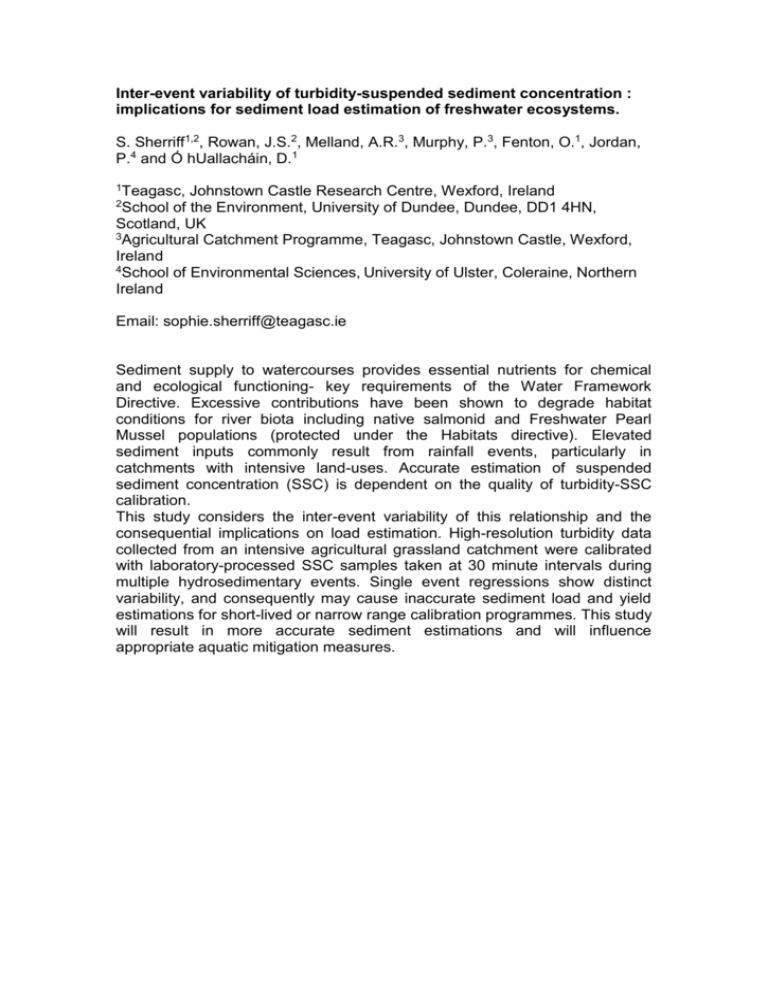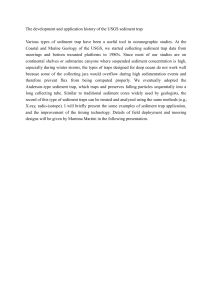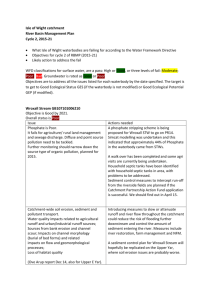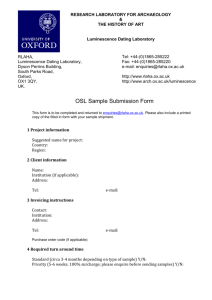Inter-event variability of turbidity-suspended sediment concentration
advertisement

Inter-event variability of turbidity-suspended sediment concentration : implications for sediment load estimation of freshwater ecosystems. S. Sherriff1,2, Rowan, J.S.2, Melland, A.R.3, Murphy, P.3, Fenton, O.1, Jordan, P.4 and Ó hUallacháin, D.1 1 Teagasc, Johnstown Castle Research Centre, Wexford, Ireland School of the Environment, University of Dundee, Dundee, DD1 4HN, Scotland, UK 3 Agricultural Catchment Programme, Teagasc, Johnstown Castle, Wexford, Ireland 4School of Environmental Sciences, University of Ulster, Coleraine, Northern Ireland 2 Email: sophie.sherriff@teagasc.ie Sediment supply to watercourses provides essential nutrients for chemical and ecological functioning- key requirements of the Water Framework Directive. Excessive contributions have been shown to degrade habitat conditions for river biota including native salmonid and Freshwater Pearl Mussel populations (protected under the Habitats directive). Elevated sediment inputs commonly result from rainfall events, particularly in catchments with intensive land-uses. Accurate estimation of suspended sediment concentration (SSC) is dependent on the quality of turbidity-SSC calibration. This study considers the inter-event variability of this relationship and the consequential implications on load estimation. High-resolution turbidity data collected from an intensive agricultural grassland catchment were calibrated with laboratory-processed SSC samples taken at 30 minute intervals during multiple hydrosedimentary events. Single event regressions show distinct variability, and consequently may cause inaccurate sediment load and yield estimations for short-lived or narrow range calibration programmes. This study will result in more accurate sediment estimations and will influence appropriate aquatic mitigation measures.











